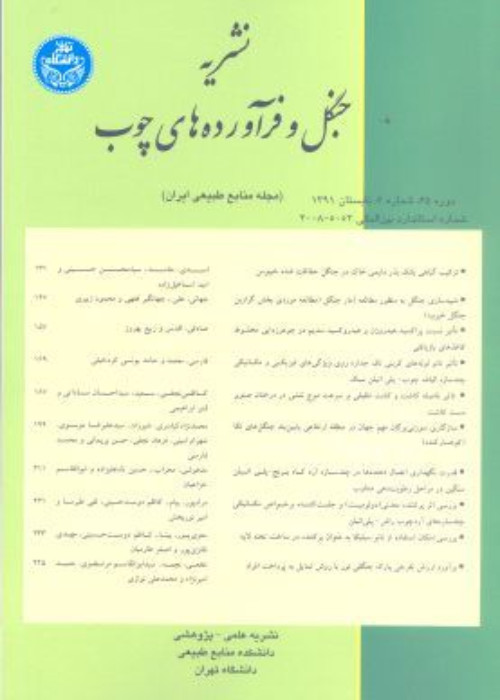Respiratory toxicity of the essential oils extracted from Greek juniper (Juniperus excelsa M.Bieb.) needles originated from two different habitats in Iran against Indianmeal moth (Plodia interpunctella (Hübner)) and mealworm (Tenebrio molitor L.)
Author(s):
Article Type:
Research/Original Article (دارای رتبه معتبر)
Abstract:
In recent decades, the use of environmentally friendly insecticides, especially plant essential oils (EO), has attracted the attention of many researchers. The aim of this study was to investigate the insecticidal effects of essential oils extracted from Juniperus excelsa needles collected from Aqdagh (Khalkhal) and Shahrestanak (Karaj) in Iran against adults of Plodia interpunctella and Tenebrio molitor. The essential oil was extracted from the needles of the plant using the clevenger apparatus, and the compounds were analyzed using a gas chromatograph coupled with a mass spectrometer (GC-MS). Fumigant toxicity of the EO was also evaluated against the above-mentioned insects by probit regression and the LC50 index. Based on the results, the chemical compounds identified in the EO from Shahrestanak and Aqdagh regions were 24 and 18 compounds, respectively. However, α-pinene was the main component of the EOs obtained from both habitats. Additionally, the results showed that the respiratory toxicity of EO in both studied areas had a positive and significant correlation with the concentration of essential oils (p < 0.01). Therefore, it seems that the EO extracted from J. excelsa needles has a high potential for use in pest control programs in warehouses. The calculated LC50 indices of Aqdagh and Shahrestank essential oils for Tenebrio molitor was 279.10 and 253.16 µl/L, respectively. Also, the indices of Aqdagh and Shahrestank essential oils for P. interpunctella were 182.26 and 115.16 µl/L, respectively. The LC50 values of Shahrestank EO were lower for both insects, probably due to the difference in the chemical compositions of Aqdagh and Shahrestanak essential oils. Considering the respiratory toxicity of the essential oil obtained from juniper leaves in two regions, and considering the difference in LC50 index, more biometric studies of J. excelsa in different habitats are recommended.
Keywords:
Language:
Persian
Published:
Journal of Forest and Wood Products, Volume:76 Issue: 4, 2024
Pages:
313 to 327
magiran.com/p2698336
دانلود و مطالعه متن این مقاله با یکی از روشهای زیر امکان پذیر است:
اشتراک شخصی
با عضویت و پرداخت آنلاین حق اشتراک یکساله به مبلغ 1,390,000ريال میتوانید 70 عنوان مطلب دانلود کنید!
اشتراک سازمانی
به کتابخانه دانشگاه یا محل کار خود پیشنهاد کنید تا اشتراک سازمانی این پایگاه را برای دسترسی نامحدود همه کاربران به متن مطالب تهیه نمایند!
توجه!
- حق عضویت دریافتی صرف حمایت از نشریات عضو و نگهداری، تکمیل و توسعه مگیران میشود.
- پرداخت حق اشتراک و دانلود مقالات اجازه بازنشر آن در سایر رسانههای چاپی و دیجیتال را به کاربر نمیدهد.
In order to view content subscription is required
Personal subscription
Subscribe magiran.com for 70 € euros via PayPal and download 70 articles during a year.
Organization subscription
Please contact us to subscribe your university or library for unlimited access!



